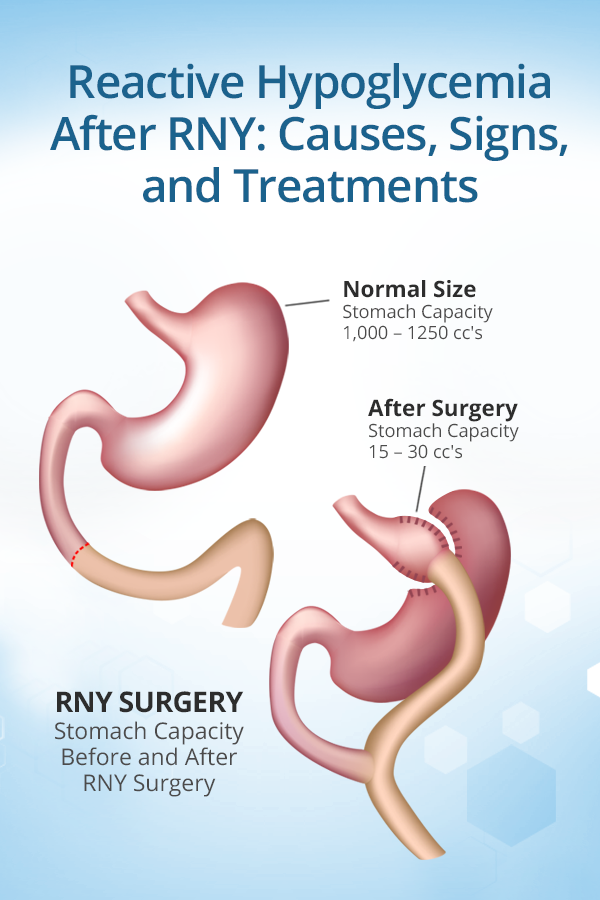Feeding your baby the first year
Feeding your baby in the first year
Feeding your baby in the first year of life is an exciting adventure for parents and babies alike. It’s about development, nutrition, curiosity, sharing and learning. Attachment also grows as you go about your daily routine with your baby.
You can help your baby develop a lifetime of healthy eating habits with the right start.
The first 6 months
For the first 6 months of life, breastfed babies will get what they need from their mother’s milk.
- Babies who are exclusively or partially breastfed should get a daily supplement of vitamin D, which is available as drops.
- Breast milk has the right amount and quality of nutrients to suit your baby’s first food needs.
- Breast milk also contains antibodies and other immune factors that help your baby prevent and fight off illness.
If breastfeeding is not an option, use a store-bought iron-fortified infant formula for the first 9 to 12 months.
- Formula should be cow milk-based.
- Homemade formulas made from canned, evaporated, whole milk (cow or goat), or any plant-based beverage, are not recommended as a breast milk substitute.
- Homemade formulas can contain harmful germs and lack important nutrients that can make your baby sick.
- Rice, soy, almond or other plant-based beverages, even when fortified, are not appropriate as a breastmilk substitute as they are nutritionally incomplete for infants. There is no evidence that soy-based formula will prevent your child from developing an allergy.
- Soy-based infant formulas should only be used as an alternative to cow milk-based formula if your baby has galactosemia (a rare disorder that will affect how your baby’s body processes simple sugar) or if your baby cannot consume dairy-based products for cultural or religious reasons.
- Talk to your doctor if you are unsure which formula is best for your child.
If your baby has allergies, or if allergies run in the family, see below for specific recommendations about when and how to introduce allergenic foods (such as eggs or peanuts).
Introducing solid foods
At about 6 months, most babies are ready for solid foods. Along with other foods, you can continue to breastfeed as long as it is comfortable for you and your baby, even well into the toddler years.
You’ll know baby is ready to start other foods when they:
- Can sit up without support, lean forward, and have good control of their neck muscles.
- Ability to pick up food and try to put it in their mouth.
- Hold food in their mouth without pushing it out with their tongue right away.
- Show interest in food when others are eating.
- Open their mouth when they see food coming their way.
- Can let you know they don’t want food by leaning back or turning their head away.
Remember that all babies are different. Some babies may be ready a few weeks before or just after 6 months. However, waiting after 6 months to introduce other foods increases your baby’s risk of iron deficiency.
What foods should we start introducing our baby to first?
There are many ways to introduce solid food. The first foods usually vary from culture to culture and from family to family.
The first foods usually vary from culture to culture and from family to family.
Start with foods that contain iron, which babies need for many different aspects of their development. Meat, poultry, cooked whole egg, fish, tofu, and well-cooked legumes (beans, peas, lentils) are good sources of iron. Store-bought iron-fortified infant cereals such as oat, wheat, barley or rice are also common first foods because they are good sources of iron. Offer iron-rich foods at least twice per day.
Healthy foods that your whole family is eating are the best choice for your baby. You can use commercial baby foods, but read the label to ensure there is no added salt or sugar. A variety of textures (such as lumpy, tender-cooked and finely minced, puréed, mashed or ground), and soft finger foods are recommended. As baby gets older, offer foods with more texture.
| First foods - Around 6 months | |
|---|---|
| Iron-rich foods | Puréed, minced, diced or cooked meat, fish, chicken, tofu, mashed beans, peas or lentils, eggs, iron-fortified infant cereal. |
| After 6 months | |
| Grain products | Iron-fortified infant cereal, small pieces of dry toast, small plain cereals, whole grain bread pieces, rice and small-sized pasta. |
| Vegetables | Puréed, mashed, lumpy or pieces of soft cooked vegetables. |
| Fruit | Puréed, mashed or lumpy soft fruit. Pieces of very ripe soft fresh fruit, peeled, seeded and diced or canned fruit (not packed with syrup). |
| Milk products | Dairy foods like full-fat yogurt, full-fat grated or cubed pasteurized cheeses, cottage cheese. |
| 9 to 12 months | |
| Milk | Whole cow’s milk (3.25%) can be introduced if breastmilk is no longer available, between 9-12 months. After 12 months of age, your baby should not take more than 25 ounces (750 mL) of milk per day. |
Introducing common food allergens
You can start to introduce common allergenic foods—like peanut products or eggs—when you are starting your baby on other solid foods, usually around 6 months of age.
However, if your baby is at high risk of developing an allergy (has allergies such as eczema, or a parent or sibling with an allergic condition) you can start after baby is 4 months old, but not sooner. Talk to your doctor if you are unsure.
Waiting until after 6 months to try to prevent an allergy is not recommended.
- When introducing foods that are common food allergens, it’s best to offer no more than one new food per day. You may want to wait a day or two before you introduce another. This makes it easier to identify a food that may have caused a reaction.
- If your baby is tolerating the allergenic food, continue offering it a few times a week to maintain tolerance.
 If an allergic reaction occurs, contact your doctor.
If an allergic reaction occurs, contact your doctor. - Make sure these new foods are smooth and small enough so that your baby isn’t at risk of choking. When introducing peanut products to young infants, try mixing a bit of peanut butter with some water, breast milk, or a puréed fruit or vegetable that your baby has had before. For older infants, spread a bit of smooth peanut butter on a piece of thin toast crust or offer a peanut puff product.
How much should I feed my baby?
Follow your baby’s cues for how much to feed. Start by offering a teaspoon or two. Don’t rush. Some babies need to try a food many times before accepting it. If she’s not hungry, she’ll turn her head and close her mouth. If she’s hungry, she’ll get excited and open up.
Never trick or coax her to eat more by playing games or offering sweetened foods. Babies who are allowed to follow their own hunger cues are much less likely to overeat later in life.
Try foods with different tastes and textures to help your baby learn how to handle foods in her mouth.
Water and juice
Babies who are exclusively breastfed don’t need extra water. When your baby begins to eat other foods, you can start to offer water occasionally, in an open cup.
- Babies and children don’t need to drink juice. Too much juice can cause diarrhea and can fill up small stomachs, decreasing your baby’s appetite for nutritious foods. Too much juice can also cause early childhood tooth decay.
- Offer water to babies and young children between meals and snacks if they are thirsty. If you choose to offer juice, be sure it is only 100% fruit juice (with no added sugar). Limit juice to 125 mL (4 oz.) per day.
Are there any foods my baby shouldn’t eat?
- Babies shouldn’t be offered sugary drinks or foods, such as candies, soda/pop or energy drinks.
- Don’t give honey to babies under a year old, as there is a risk of infant botulism (food poisoning).
- If you have concerns, please speak to your health care provider.

Is there anything else I should know about feeding my baby?
- Always wash your hands before preparing your baby’s food, and wash your baby’s hands before they eat.
- Wipe your baby’s gums with a soft, damp cloth twice a day for good oral health.
How can I prevent choking?
Young children don’t know how to chew food into tiny pieces. And they haven’t learned how to bring a piece of food back up when it gets caught going down. Foods most likely to cause choking are small, round or cylindrical in shape, like hot dogs, whole grapes, carrot slices, seeds and hard candy.
To protect your baby:
- Always supervise them while they are eating.
- Make sure your baby is sitting down to eat.
- Grate raw vegetables such as carrots to make them easier to chew.
- Cook hard fruits and vegetables to soften them.
- Slice round foods such as hot dogs or grapes lengthwise.
- Remove pits from fruits.
- Chop or scrape stringy meat and add broth to moisten it.

- Spread sticky foods like nut butters thinly on a cracker or toast rather than bread.
- Don’t feed your baby whole nuts, raisins, popcorn, gummy candies, hard candy, or fish with bones.
Developmental milestones related to feeding
| Age | Physical milestones | Social milestones |
|---|---|---|
| Birth to 4 months |
|
|
| 4 to 6 months |
|
|
| 6 to 9 months |
|
|
| 9 to 12 months |
|
|
| 12 to 18 months |
|
|
| 18 to 24 months |
|
|
More information from the CPS
Additional resources
Reviewed by the following CPS committees
- Allergy Section
- Nutrition and Gastroenterology Committee
- Public Education Advisory Committee
Last updated: January 2020
Feeding Guide for the First Year
Feeding Guide for the First Year | Johns Hopkins MedicineReviewed By:
Tiffani Hays, M. S., R.D., L.N., Director of the Pediatric Clinical Nutrition Education & Practice
S., R.D., L.N., Director of the Pediatric Clinical Nutrition Education & Practice
Making appropriate food choices for your baby during the first year of life is very important. More growth occurs during the first year than at any other time. It’s important to feed your baby a variety of healthy foods at the proper time. Starting good eating habits at this early stage will help set healthy eating patterns for life.
Recommended Feeding Guide for the First Year
Breast milk and formula are designed to be the primary sources of nutrition throughout an infant’s first year of life. You should talk with your baby’s health care provider before starting solid foods. Solid foods should not begin before age 4 months because:
- Breast milk or formula provide your baby with all the nutrients that are needed.
- Your baby isn’t physically developed enough to eat solid food from a spoon.
- Feeding your baby solid food too early may result in poor feeding experiences and increased weight gain in both infancy and early childhood.

The American Academy of Pediatrics (AAP) recommends that all infants, children and adolescents take in enough vitamin D through supplements, formula or cow’s milk to prevent complications from deficiency of this vitamin. In November 2008, the AAP updated its recommendations for daily intake of vitamin D for infants, children, and adolescents who are healthy. It is now recommended that the minimum intake of vitamin D for these groups should be 400 IU per day, beginning soon after birth. Your baby’s health care provider can recommend the proper type and amount of vitamin D supplement.
Guide for Breast-feeding (Zero to 12 Months)
- In the early days after a baby’s birth, the mother should plan to breast-feed every two to three hours, including overnight. The mother should respond to the infant’s cues of hunger in a prompt and relaxed manner, providing a quiet and comfortable environment for both herself and the baby. Frustrated or distracted infants may have difficulties latching on.
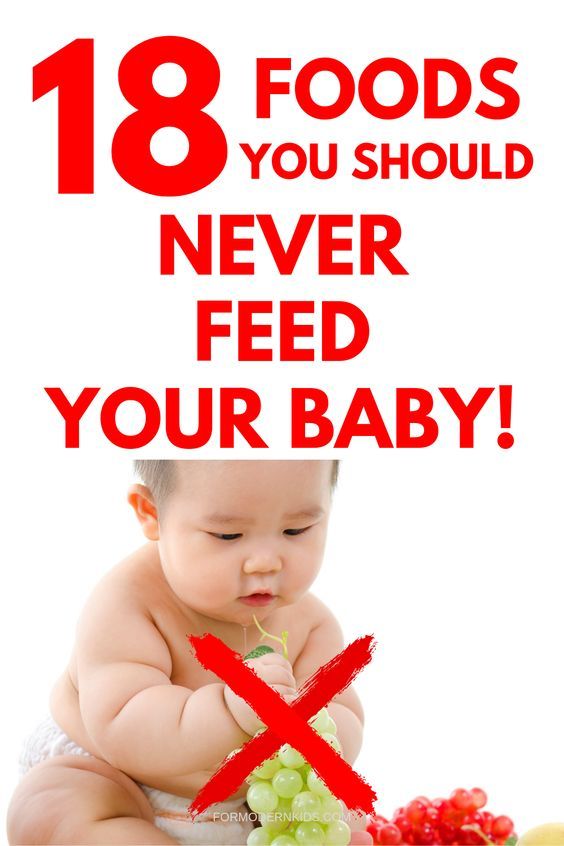
- It is normal for infants to wake up overnight to feed for the first several months. If you have any concerns about overnight feeding, please discuss them with your health care provider.
- Alternate breasts to feed on, and allow the infant to completely empty the breast before switching to the other. This practice ensures the infant receives hindmilk, which is richer in nutrients.
- Follow your child’s feeding cues and resist forcing a schedule. Instead, rely on keeping track of wet diapers and your child’s growth to judge whether he or she is receiving enough breast milk. A mother’s milk changes as the infant grows, and feeding habits change as well in order to best meet a child’s needs. If you have any questions about whether your child is receiving enough breast milk, ask your health care provider.
- When not able to breast-feed, use a breast pump to extract milk and maintain milk supply.
 Pumped breast milk should be stored safely, using appropriate temperature guidelines. Pumped breast milk may be offered to infants in bottles, while responding to the same feeding cues to determine how much they take. Forcing bottles to be emptied may result in overfeeding and excess weight gain, even when feeding breast milk.
Pumped breast milk should be stored safely, using appropriate temperature guidelines. Pumped breast milk may be offered to infants in bottles, while responding to the same feeding cues to determine how much they take. Forcing bottles to be emptied may result in overfeeding and excess weight gain, even when feeding breast milk. - With the proper support, a mother can meet the needs of most infants, even twins, so seek out help from your health care provider or lactation consultant for success.
Guide for Formula Feeding (Zero to 12 Months)
- When breast milk is not available, standard infant formula is an appropriate alternative for most healthy full term infants, but there are some differences between brands. Do not hesitate to ask your health care provider for a recommendation if you are unsure which formula to use.
- Bottle-feeding should be interactive, with the caregiver holding both the bottle and the infant.
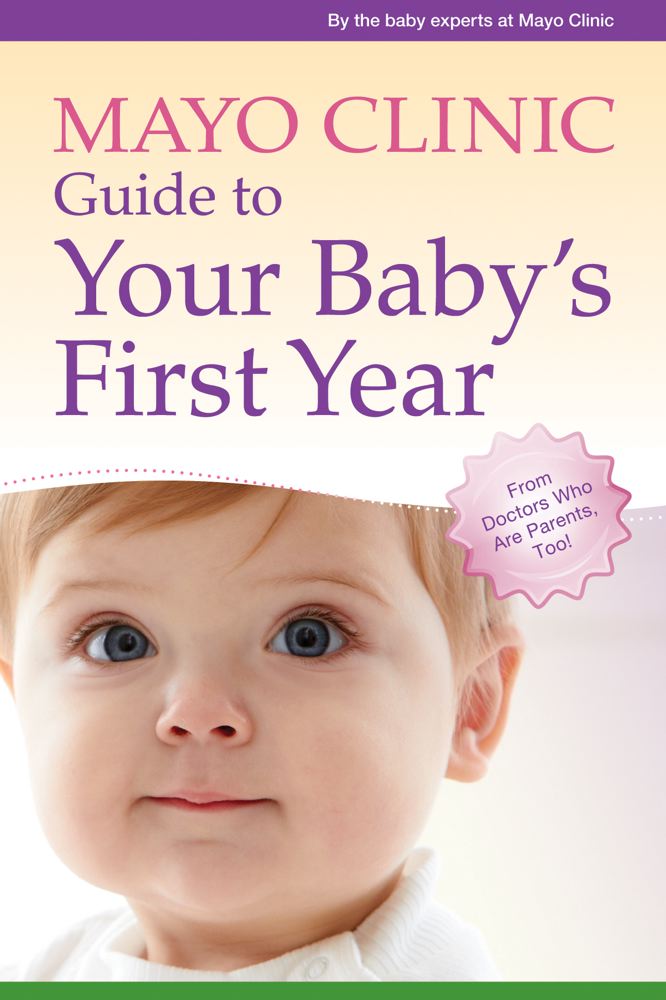 Propping a bottle has been linked to an increased risk of ear infections and tooth decay.
Propping a bottle has been linked to an increased risk of ear infections and tooth decay. - Formula feeding should be in response to the infant’s needs and not based on a predetermined schedule. Look for cues of hunger and fullness to determine both when to feed and how much. The number of wet diapers per day and your child’s growth will reflect if he or she is getting enough formula. The chart below demonstrates common intakes for infants at various stages. However, ask your health care provider if you have any questions about how much formula your infant is taking.
- The amount of formula an infant takes will decrease as the baby increases intake of solid foods, but formula remains a significant source of calories, protein, calcium and vitamin D for the first year of life.
- Ask your health care provider before switching an infant less than 1 year of age from formula to cow’s milk or a cow’s milk alternative.

| Age | Amount of formula per feeding | Number of feedings per 24 hours |
|---|---|---|
| 1 month | 2 to 4 ounces | six to eight |
| 2 months | 5 to 6 ounces | five to six |
| 3 to 5 months | 6 to 7 ounces | five to six |
Complementary Feedings (After 6 Months of Age)
Beverages
- Offer only breast milk or formula in bottles until 1 year of age unless specifically advised by your health care provider.
- Begin offering breast milk and/or formula in a cup starting at 6 months of age.
 Infants should drink breast milk and/or formula for the first year of life.
Infants should drink breast milk and/or formula for the first year of life. - Fruit juice is not recommended under 1 year of age.
- When introducing juice, offer 100% pasteurized juice and limit it to 4–6 ounces per day. Do NOT place juice in a bottle.
- Avoid giving any sugar-sweetened beverages to infants.
Solid Foods
- Introduce solid foods when your infant is ready, at around 6 months of age depending on the infant’s development. Infants are ready to start eating solid foods when they can:
- sit up on their own or with a little support
- reach for and put things in their mouth
- open their mouth when seeing something coming
- keep food in their mouth rather than pushing it out onto the chin
- move food to the back of their mouth with their tongue
- turn their head away when they do not want something
- Prepare to introduce solid foods in a calm feeding environment where the infant is sitting upright and is appropriately supported and moderately hungry.

- Start with small amounts of solid food, feeding with a spoon or allowing finger feeding, then gradually increase the amount as the infant eats more and develops. Avoid offering breast milk or formula until after the solid-food experience has wound down.
- Expose infants to a wide variety of flavors and textures of healthy food. Don’t limit your baby’s food choices to the ones you like. Offering a range of foods early will pave the way for healthy eating habits.
- Maintain the division of responsibility when feeding.
- The caregiver is responsible for what to eat (offering appropriate variety and textures).
- The child is responsible for deciding whether to eat and how much.
- Avoid adding salt or sugar to make baby foods more appealing. Many babies and toddlers need to experience a new food multiple times before accepting it, and increased intakes of salt and sugar among children are associated with obesity in adults.

- Observe infants for any signs of intolerance when introducing a new food or texture, and discuss all concerns with your health care provider.
- Although convenient and safe, commercial baby foods are not required. Young children are more likely to eat foods they see others eating, so as long as they are observed to see how they handle new food in their mouths, baby-led weaning using table foods is an appropriate way to introduce solids.
- Avoid honey in any form during your child’s first year, as it can cause infant botulism. Address any concerns about developing food allergies with your health care provider.
- Don’t restrict fat and cholesterol in the diets of very young children, unless advised by your child’s health care provider. Children need calories, fat and cholesterol for the development of their brains and nervous systems, and for general growth.
Updated on July 26, 2019.
Related
-
Nutrition
Toddler Nutrition
-
Breastfeeding Your Baby
Breastfeeding 101: Q&A with Lactation Expert Nadine Rosenblum
-
Developmental Milestones: Babies and Toddlers
Well-Care Visits
Related Topics
Union of Pediatricians of Russia
Nutrition for children from 1 to 3 years of age
The period from 1 to 3 years of life is a crucial stage in the transition to an adult type of nutrition, which has certain features. In order to ensure that all the necessary nutrients enter the child's body and at the same time prevent an excess of individual nutrients, nutrition should be balanced and varied.
The daily amount of food for children aged 1 to 1.5 years should be 1000-1200 g, from 1.5 to 3 years - 1200-1500 g, the amount of food in one feeding should not exceed 300-350 ml. The diet consists of three main meals per day and two snacks. It is considered optimal when breakfast is 25% of the total energy density of the diet, lunch is 30–35%, dinner is 20%, and additional meals are about 10%. In general, the child can eat the same food as the rest of the family.
In the diet of a child of 1–3 years of age , must be present daily: meat of animals or poultry, dairy and sour-milk products, vegetables, fruits, bread, cereals, vegetable and butter; fish and eggs are included in the diet 2-3 times a week.
Cereal products: bread - 2-3 servings per day, cereals and side dishes - 1 time per day
Fruit and/or vegetables: at least 5 times a day
Dairy products: at least 3 servings per day (including those used to make cereals, yoghurts, fermented milk drinks, cottage cheese, infant formula or breast milk).
Domestic pediatricians recommend, when compiling a diet for children aged 1–3 years, preference should be given to specialized children's dairy products of industrial production that meet high quality requirements and safety indicators for this age. Most children's dairy products are additionally enriched with vitamins and/or minerals and other biologically active components, taking into account the physiological needs of children of this age. At the same time, in foreign recommendations, children over 1 year old are offered the gradual introduction of whole cow's milk, which is rich in fats necessary for proper growth and development, the absorption of vitamins A and D, the development of the brain and nervous system of the child.
Meat dishes: 2-3 times a day
Fish dishes: 2-3 servings per week
Eggs: 2-3 per week
Dietary fats: 3-4 teaspoons of butter and/or vegetable oils per day
When cooking, use the minimum amount of salt and sugar, and do not add them to industrial products.
Offer your child a variety of foods and let them choose for themselves. Children love to eat on their own, so if possible, offer food that the child can eat with their hands.
It is important to remember that a baby can choke on pieces of food, so whatever you give your baby should be crushed or cut into small pieces that can be easily chewed.
Do not give to a small child: nuts, whole grapes, cherry tomatoes (unless quartered), whole carrots, seeds (such as pumpkin or sunflower seeds), round candies, legumes, raisins, because a child can eat them choke.
Also in the diet of children of the first 3 years of life should not be present:
Mushrooms; canned snacks, pickled vegetables and fruits
Home canned food
Dry concentrates for side dishes
Hot sauces, mustard, horseradish, pepper, vinegar, mayonnaise
Natural coffee
Juices and drinks in the form of dry concentrates; sweet carbonated drinks
Products containing food additives (flavorings, dyes of artificial origin, including chewing gum), popcorn
Combined fats; cakes and pastries
It is important to remember that children of this age should not be given too spicy and spicy foods.
Breastfeeding in the first month: what to expect
Not sure how to establish lactation and increase milk production? If you need help, support, or just want to know what to expect, read our first month breastfeeding advice
Share this information
The first few weeks of breastfeeding are stressful. If at times you feel like you can't handle it, know that you are not alone. Feeding your baby all day long is completely natural and helps produce breast milk, but can be quite tiring at times. Be patient, think about yourself and remember: after the first month, when milk production stabilizes, it will become easier.
How often should a baby be breastfed?
Babies are born with a small stomach that grows rapidly with the increase in milk production: in the first week it is no larger than an apricot, and after two weeks it is already the size of a large chicken egg. 1.2 Let the child eat as much as he wants and when he wants. This will help him quickly regain the weight lost after birth and grow and develop further.
This will help him quickly regain the weight lost after birth and grow and develop further.
“Be prepared to feed every two to three hours throughout the day. At night, the intervals between feedings can be longer: three to four or even five hours, says Cathy Garbin, a recognized international expert on breastfeeding. Some eat quickly and are satiated in 15 minutes, while others take an entire hour to feed. Do not compare your breastfeeding regimen with that of other mothers - it is very likely that there will be nothing in common between them.
At each feed, give your baby a full meal from one breast and then offer a second one, but don't worry if the baby doesn't take it. When the baby is full, he lets go of his chest and at the same time looks relaxed and satisfied - so much so that he can immediately fall asleep. The next time you feed, start on the other breast. You can monitor the order of the mammary glands during feeding using a special application.
Why does the child always ask for a breast?
The first month is usually the hardest time to breastfeed. But do not think that because the baby is constantly hungry and asks for a breast almost every 45 minutes, then you do not have enough milk.
But do not think that because the baby is constantly hungry and asks for a breast almost every 45 minutes, then you do not have enough milk.
In the first month, the baby needs to eat frequently to start and stimulate the mother's milk production. It lays the foundation for a stable milk supply in the future. 3
In addition, we must not forget that the child needs almost constant contact with the mother. The bright light and noise of the surrounding world at first frighten the baby, and only by clinging to his mother, he can calm down.
Sarah, mother of three from the UK, confirms: “Crying is not always a sign of hunger. Sometimes my kids just wanted me to be around and begged for breasts to calm them down. Use a sling. Place the cradle next to the bed. Don't look at the clock. Take advantage of every opportunity to relax. Forget about cleaning. Let those around you take care of you. And not three days, but six weeks at least! Hug your baby, enjoy the comfort - and trust your body.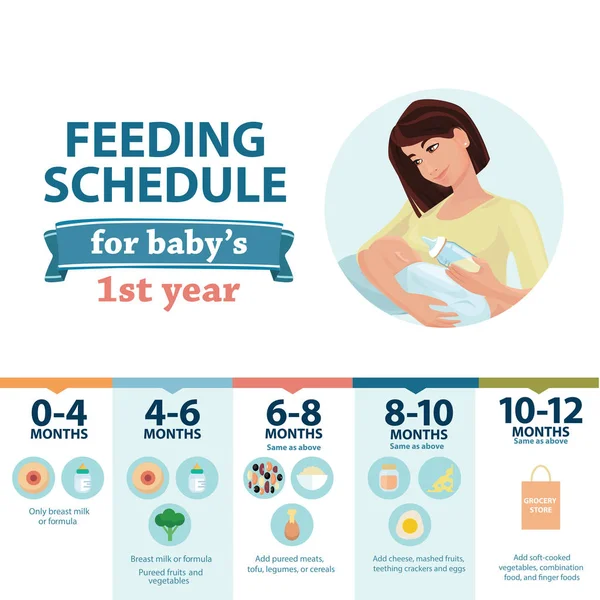 "
"
Do I need to feed my baby on a schedule?
Your baby is still too young for a strict daily routine, so
forget about breastfeeding schedules and focus on his needs.
“Volumes have been written about how to feed a baby on a schedule, but babies don't read or understand books,” Cathy says. - All children are different. Some people can eat on a schedule, but most can't. Most often, over time, the child develops his own schedule.
Some mothers report that their babies are fine with scheduled feedings, but they are probably just the few babies who would eat every four hours anyway. Adults rarely eat and drink the same foods at the same time of day - so why do we expect this from toddlers?
Offer your baby the breast at the first sign of hunger. Crying is already the last stage, so be attentive to early signs: the baby licks his lips, opens his mouth, sucks his fist, turns his head with his mouth open - looking for the breast. 4
What is a "milk flush"?
At the beginning of each feed, a hungry baby actively sucks on the nipple,
thereby stimulating the milk flow reflex - the movement of milk through the milk ducts. 5
5
“Nipple stimulation triggers the release of the hormone oxytocin,” explains Cathy. “Oxytocin is distributed throughout the body and causes the muscles around the milk glands to contract and the milk ducts to dilate. This stimulates the flow of milk.
If the flushing reflex fails, milk will not come out. This is a hormonal response, and under stress it may not work at all or work poorly. Therefore, it is so important that you feel comfortable and calm when feeding.
“Studies show that each mother has a different rhythm of hot flashes during one feed,” Kathy continues, “Oxytocin is a short-acting hormone, it breaks down in just 30-40 seconds after formation. Milk begins to flow, the baby eats, the effect of oxytocin ends, but then a new rush of milk occurs, the baby continues to suckle the breast, and this process is repeated cyclically. That is why, during feeding, the child periodically stops and rests - this is how nature intended.
The flow of milk may be accompanied by a strong sensation of movement or tingling in the chest, although 21% of mothers, according to surveys, do not feel anything at all.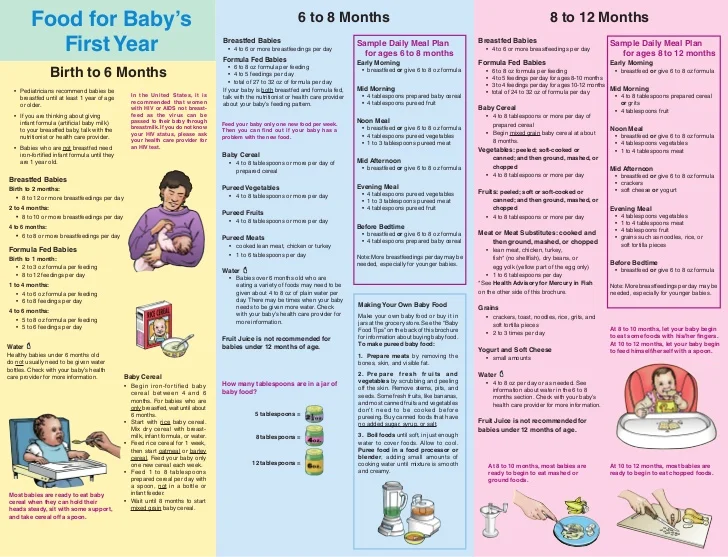 5 Cathy explains: “Many women only feel the first rush of milk. If you do not feel hot flashes, do not worry: since the child eats normally, most likely, you simply do not understand that they are.
5 Cathy explains: “Many women only feel the first rush of milk. If you do not feel hot flashes, do not worry: since the child eats normally, most likely, you simply do not understand that they are.
How do you know if a baby is getting enough milk?
Since it is impossible to track how much milk a baby eats while breastfeeding, mothers sometimes worry that the baby is malnourished. Trust your child and your body.
After a rush of milk, the baby usually begins to suckle more slowly. Some mothers clearly hear how the baby swallows, others do not notice it. But one way or another, the child himself will show when he is full - just watch carefully. Many babies make two or three approaches to the breast at one feeding. 6
“When a child has eaten, it is noticeable almost immediately: a kind of “milk intoxication” sets in. The baby is relaxed and makes it clear with his whole body that he is completely full, says Katie, “Diapers are another great way to assess whether the baby is getting enough milk. During this period, a breastfed baby should have at least five wet diapers a day and at least two portions of soft yellow stool, and often more.”
During this period, a breastfed baby should have at least five wet diapers a day and at least two portions of soft yellow stool, and often more.”
From one month until weaning at six months of age, a baby's stool (if exclusively breastfed) should look the same every day: yellow, grainy, loose, and watery.
When is the child's birth weight restored?
Most newborns lose weight in the first few days of life. This is normal and should not be cause for concern. As a rule, weight is reduced by 5-7%, although some may lose up to 10%. One way or another, by 10–14 days, almost all newborns regain their birth weight. In the first three to four months, the minimum expected weight gain is an average of 150 grams per week. But one week the child may gain weight faster, and the next slower, so it is necessary that the attending physician monitor the health and growth of the baby constantly. 7.8
At the slightest doubt or signs of dehydration, such as
dark urine, no stool for more than 24 hours, retraction of the fontanel (soft spot on the head), yellowing of the skin, drowsiness, lethargy, lack of appetite (ability to four to six hours without feeding), you should immediately consult a doctor. 7
7
What is "cluster feeding"?
When a baby asks for a breast very often for several hours, this is called cluster feeding. 6 The peak often occurs in the evening between 18:00 and 22:00, just when many babies are especially restless and need close contact with their mother. Most often, mothers complain about this in the period from two to nine weeks after childbirth. This is perfectly normal and common behavior as long as the baby is otherwise healthy, eating well, gaining weight normally, and appears content throughout the day. 9
Cluster feeding can be caused by a sharp jump in the development of the body - during this period the baby especially needs love, comfort and a sense of security. The growing brain of a child is so excited that it can be difficult for him to turn off, or it just scares the baby. 9 If a child is overworked, it is often difficult for him or her to calm down on his own and the help of adults is needed. And breastfeeding is the best way to calm the baby, because breast milk is not only food, but also pain reliever and a source of happiness hormones. 10
And breastfeeding is the best way to calm the baby, because breast milk is not only food, but also pain reliever and a source of happiness hormones. 10
“Nobody told me about cluster feeding, so for the first 10 days I just went crazy with worry - I was sure that my milk was not enough for the baby,” recalls Camilla, a mother from Australia, “It was a very difficult period . I was advised to pump and supplement until I finally contacted the Australian Breastfeeding Association. There they explained to me what was happening: it turned out that it was not about milk at all.
Remember, this is temporary. Try to prepare dinner for yourself in the afternoon, when the baby is fast asleep, so that in the evening, when he begins to often breastfeed, you have the opportunity to quickly warm up the food and have a snack. If you are not alone, arrange to carry and rock the baby in turns so that you have the opportunity to rest. If you have no one to turn to for help and you feel that your strength is leaving you, put the baby in the crib and rest for a few minutes, and then pick it up again.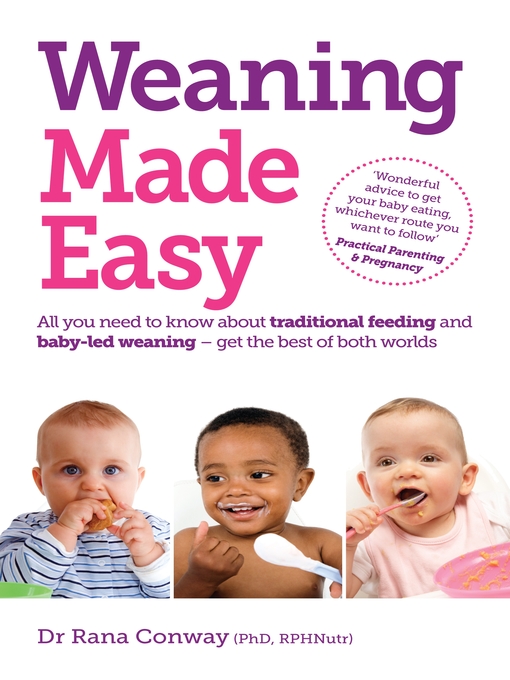
Ask your partner, family and friends to help you with household chores, cooking and caring for older children if you have any. If possible, hire an au pair. Get as much rest as possible, eat well and drink plenty of water.
“My daughter slept a lot during the day, but from 23:00 to 5:00 the cluster feeding period began, which was very tiring,” recalls Jenal, a mother from the USA, “My husband tried his best to make life easier for me - washed, cleaned, cooked, changed diapers, let me sleep at every opportunity and never tired of assuring me that we were doing well.
If you are concerned about the frequency of breastfeeding, it is worth contacting a specialist. “Check with a lactation consultant or doctor to see if this is indicative of any problems,” recommends Cathy. “Resist the temptation to supplement your baby with formula (unless recommended by your doctor) until you find the cause. It may not be a matter of limited milk production at all - it may be that the child is inefficiently sucking it.
When will breastfeeding become easier?
This early stage is very special and does not last long. Although sometimes it seems that there will be no end to it, rest assured: it will get easier soon! By the end of the first month, breast milk production will stabilize, and the baby will become stronger and learn to suckle better. 2.3 Any problems with latch on by this time will most likely be resolved and the body will be able to produce milk more efficiently so inflammation and leakage of milk will start to subside.
“The first four to six weeks are the hardest, but then things start to get better,” Cathy assures. It just needs to be experienced!”
The longer breastfeeding continues, the more benefits it brings, from saving on formula and improving sleep quality 11-13 to boosting your baby's immune system 14 and reducing your risk of certain cancers. 15
“When you feel like you're pushing yourself, try to go from feed to feed and day to day,” says Hannah, a UK mom. “I was sure I wouldn’t make it to eight weeks. And now I have been breastfeeding for almost 17 weeks, and I dare say it is very easy.”
“I was sure I wouldn’t make it to eight weeks. And now I have been breastfeeding for almost 17 weeks, and I dare say it is very easy.”
Read the resource Breastfeeding Beyond the First Month: What to Expect
Literature
1 Naveed M et al. An autopsy study of relationship between perinatal stomach capacity and birth weight. Indian J Gastroenterol .1992;11(4):156-158. - Navid M. et al., Association between prenatal gastric volume and birth weight. Autopsy. Indian J Gastroenterol. 1992;11(4):156-158.
2 Neville MC et al. Studies in human lactation: milk volumes in lactating women during the onset of lactation and full lactation .Am J Clinl Nutr .1988;48(6):1375-1386. at the beginning and at the peak of lactation." Am F Clean Nutr. 1988;48(6):1375-1386.
3 Kent JC et al. Principles for maintaining or increasing breast milk production. 2012;41(1):114-121. - Kent J.S. et al., "Principles for Maintaining and Increasing Milk Production". J Obstet Ginecol Neoneutal Nurs. 2012;41(1):114-121.
Principles for maintaining or increasing breast milk production. 2012;41(1):114-121. - Kent J.S. et al., "Principles for Maintaining and Increasing Milk Production". J Obstet Ginecol Neoneutal Nurs. 2012;41(1):114-121.
4 Australian Breastfeeding Feeding cues ; 2017 Sep [ cited 2018 Feb ]. - Australian Breastfeeding Association [Internet], Feed Ready Signals; September 2017 [cited February 2018]
5 Kent JC et al. Response of breasts to different stimulation patterns of an electric breast pump. J Human Lact . 2003;19(2):179-186. - Kent J.S. et al., Breast Response to Different Types of Electric Breast Pump Stimulation. J Human Lact (Journal of the International Association of Lactation Consultants). 2003;19(2):179-186.
6) Kent JC et al . Volume and frequency of breastfeedings and fat content of breast milk throughout the day. Pediatrics. 2006;117(3): e 387-395. - Kent J.S. et al., "Amount and frequency of breastfeeding and fat content of breast milk during the day." Pediatrix (Pediatrics). 2006;117(3):e387-95.
7 Lawrence RA, Lawrence RM. Breastfeeding: A guide for the medical profession. 7th ed. Maryland Heights MO, USA: Elsevier Mosby; 2010. 1128 p . - Lawrence R.A., Lawrence R.M., "Breastfeeding: A guide for healthcare professionals." Seventh edition. Publisher Maryland Heights , Missouri, USA: Elsevier Mosby; 2010. P. 1128.
8 World Health Organization. [Internet]. Child growth standards; 2018 [cited 2018 Feb] - World Health Organization. [Internet]. Child Growth Standards 2018 [cited February 2018].
[Internet]. Child Growth Standards 2018 [cited February 2018].
9 Australian Breastfeeding Association . [ Internet ]. Cluster feeding and fussing babies ; Dec 2017 [ cited 2018 Feb ] - Australian Breastfeeding Association [Internet], "Cluster feeding and screaming babies"; December 2017 [cited February 2018].
10 Moberg KU, Prime DK. Oxytocin effects in mothers and infants during breastfeeding. Infant . 2013;9(6):201-206.- Moberg K, Prime DK, "Oxytocin effects on mother and child during breastfeeding". Infant. 2013;9(6):201-206.
11 U.S. Department of Health & Human Services [Internet]. Surgeon General Breastfeeding factsheet; 2011 Jan 20 [cited 2017 Feb] - Department of Health and Human Services [Internet], "Breastfeeding Facts from the Chief Medical Officer", Jan 20, 2011 [cited Feb 2017]
12 Kendall-Tackett K et al. The effect of feeding method on sleep duration, maternal well-being, and postpartum depression. clinical lactation. 2011;1;2(2):22-26. - Kendall-Tuckett, K. et al., "Influence of feeding pattern on sleep duration, maternal well-being and the development of postpartum depression." Clinical Lactation. 2011;2(2):22-26.
The effect of feeding method on sleep duration, maternal well-being, and postpartum depression. clinical lactation. 2011;1;2(2):22-26. - Kendall-Tuckett, K. et al., "Influence of feeding pattern on sleep duration, maternal well-being and the development of postpartum depression." Clinical Lactation. 2011;2(2):22-26.
13 Brown A, Harries V. Infant sleep and night feeding patterns during later infancy: Association with breastfeeding frequency, daytime complementary food intake, and infant weight. Breast Med . 2015;10(5):246-252. - Brown A., Harris W., "Night feedings and infant sleep in the first year of life and their association with feeding frequency, daytime supplementation, and infant weight." Brest Med (Breastfeeding Medicine). 2015;10(5):246-252.
14 Hassiotou F et al. Maternal and infant infections stimulate a rapid leukocyte response in breastmilk.

 Otherwise, they will fill up and won’t want to eat solid foods. Too much milk can also lead to iron deficiency anemia.
Otherwise, they will fill up and won’t want to eat solid foods. Too much milk can also lead to iron deficiency anemia.